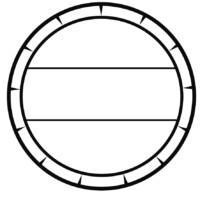
Pitching refers to a concise and convincing presentation aimed at generating interest from listeners such as investors, customers, or partners in the presented idea, product, service, or project.
The goal of pitching is to spark interest and prompt the recipient to act in a desired manner, such as investing, purchasing, or supporting the matter presented.
How to succeed in pitching?
Guidelines for preparing for a pitch
Pitching, or presenting the key points of a product, service, or business idea in a short and concise manner, is a skill that requires careful preparation. Here are some tips for preparing and delivering a successful pitch:
Prepare and practice
- Build a clear and concise speech:
- The pitch should last no more than 5 minutes. During this time, you must convey the essential information to the jury or audience. Use your time wisely to build a logical and impactful presentation.
- Problem: Begin your presentation by describing the problem in the market. Why is this problem significant, and why should it be solved?
- Solution: Next, present your solution. What makes your solution unique and effective?
- Market Potential: Describe the market your solution targets. What is the market potential of your solution?
- Revenue Model: Explain how your solution will become a profitable business. How do you plan to make money?
- Competitors: Identify your competitors and justify why your solution is better.
- Team: Tell about your team. Why is your team capable of successfully advancing the idea?
- Results: Present your current achievements and demonstrate that your idea works in practice.
- Future Needs: What do you need moving forward to achieve your goals? This could include funding, partnerships, or expert support.
- Practice, refine, practice:
- Practice your presentation multiple times. After each practice session, refine and condense the content to make your pitch as concise as possible.
- Aim to present your ideas clearly and convincingly. Repetition helps you find the best ways to express your points and stay within the allotted time.
Use visual aids:
- Use diagrams and images:
- Visual elements can make your presentation more memorable and easier to understand. Use clear diagrams and images to support your message.
- Avoid long sentences on slides. Keep the text short and concise, focusing on the most important points.
- A visual presentation supports your pitch:
- Present only the most essential points on your PowerPoint slides and deliver the rest of the information verbally. This approach keeps the audience more focused and encourages them to listen to what you’re saying.
Be yourself and stick to the schedule:
- Know your content and boundaries:
- Think carefully about what you say and focus on the essentials. Don’t try to cover everything; instead, emphasize the points that are most important to the audience and align with the goals of your pitch.
- Do not exceed the time allotted to you. Keep track of time while practicing and ensure your presentation stays on schedule.
- Be yourself and convey your passion:
- Make the presentation reflect your personality and be true to yourself. Convey your passion and drive to move the business forward. A positive and energetic delivery will leave a lasting impression on the audience.
In conclusion
Remember, a good pitch is a combination of clear communication, effective visual presentation, and passionate delivery. Practice thoroughly, focus on the essentials, and keep the structure of your pitch in mind. With these guidelines, you’re ready to make an impact and take your idea forward!

